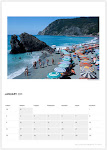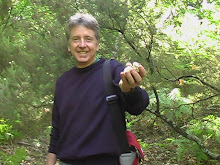Up until the end of World War II many of the villages in the rugged region of Lunigiana in northern Tuscany were isolated from each other, with only a few gravel roads and mule tracks joining them. As a result each village developed its own unique character and, in many cases, dialect. They also coined colourful nicknames for each other.
People from my father's village of Codiponte, on the banks of the river Aulella, are not surprisingly called
Ranocchi or frogs. The local specimen shown above is from the Natural History Museum of Lunigiana, which is located in the Fortezza Brunella in Aulla.
Less flattering is the name for the villagers from Casciana, just above Codiponte, who are called
Lumaconi or large slugs. Other colourful nicknames include
Assini or asses for Reusa;
Pipistrelle or bats for Casola;
Gati or cats for Vignetta and
Ceri or oak trees for Vedriano.
Inexplicably the villagers from Luscignano are called
Mauri (which is pronouced like the New Zealand
Maori).










